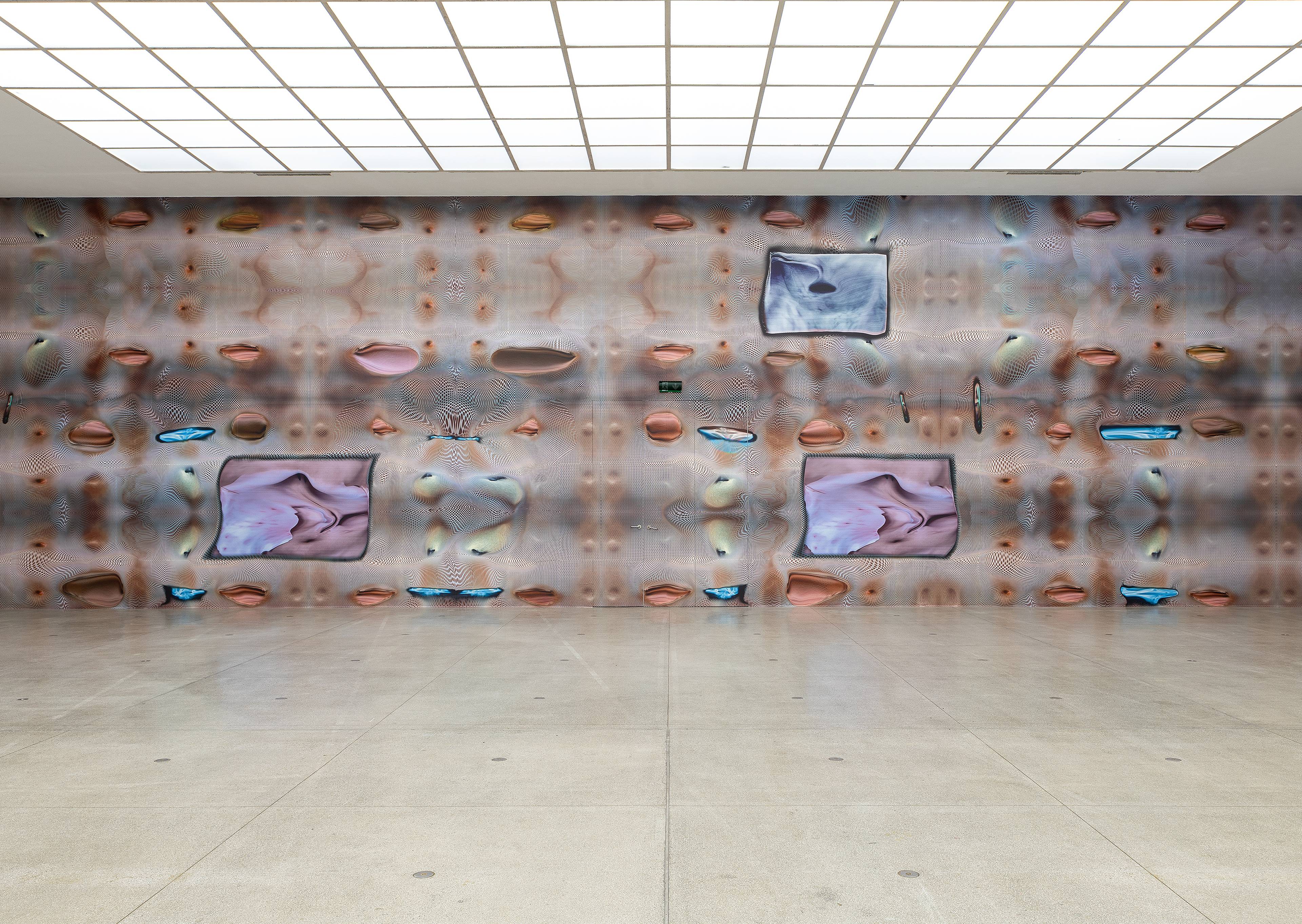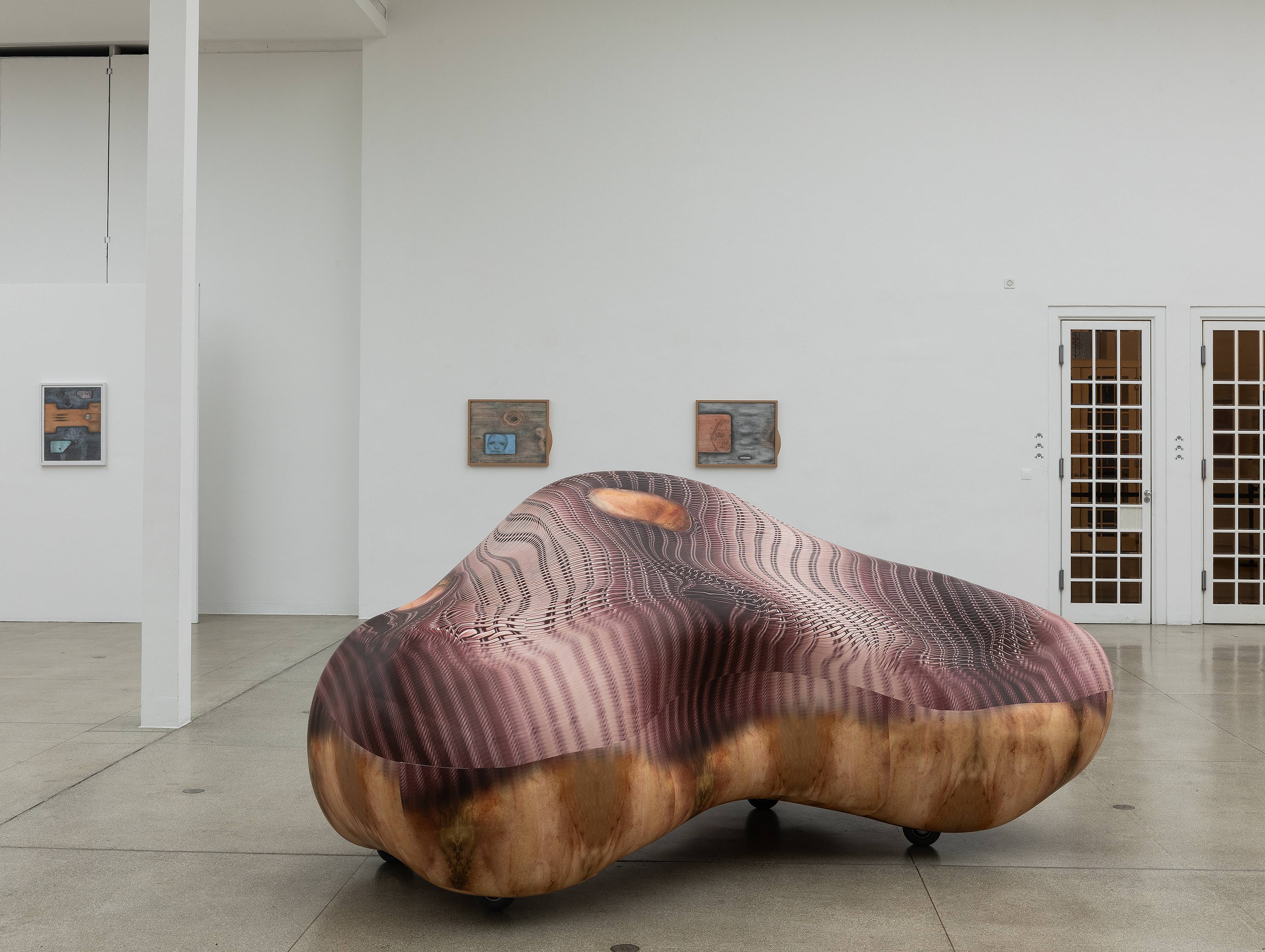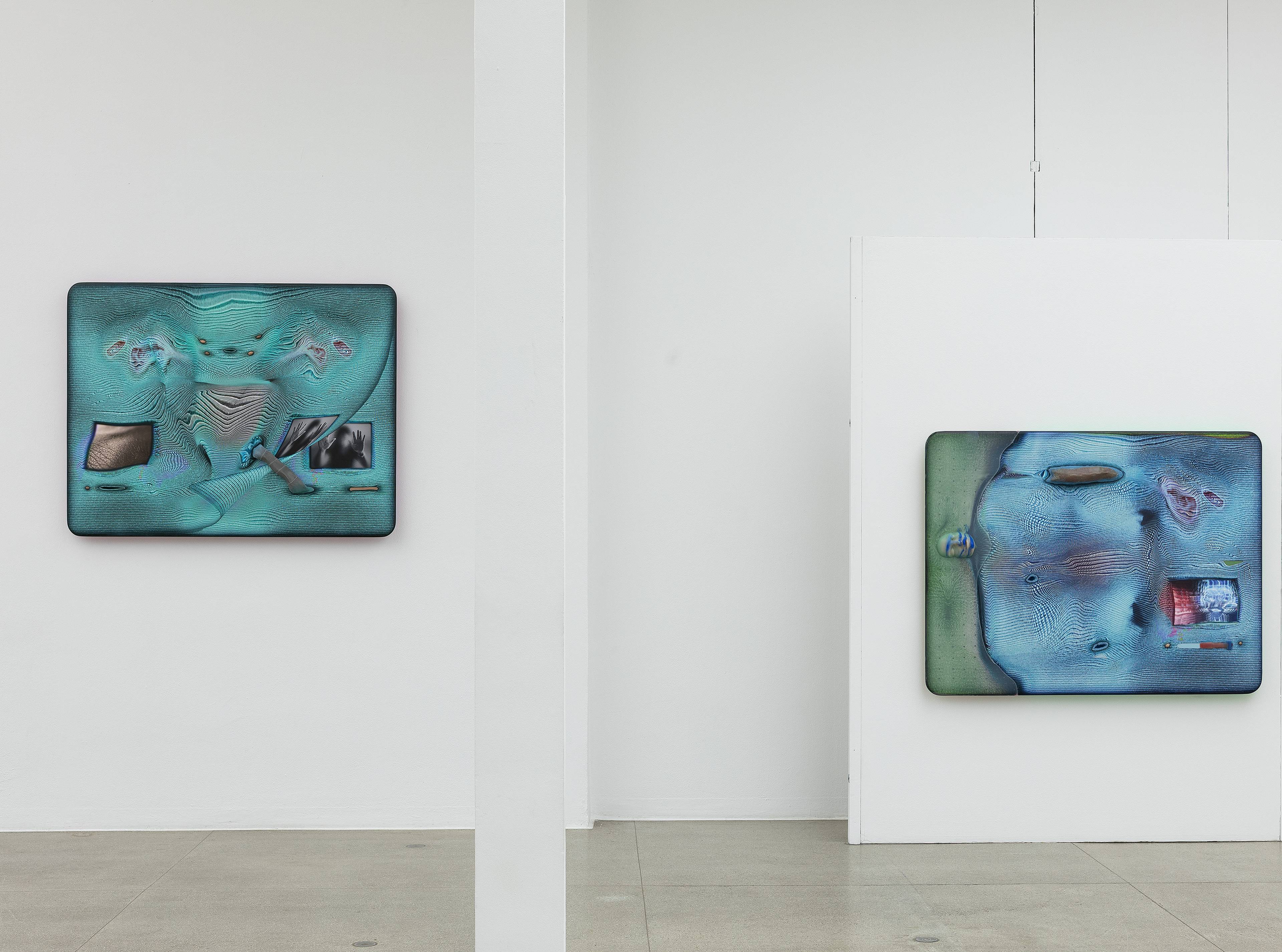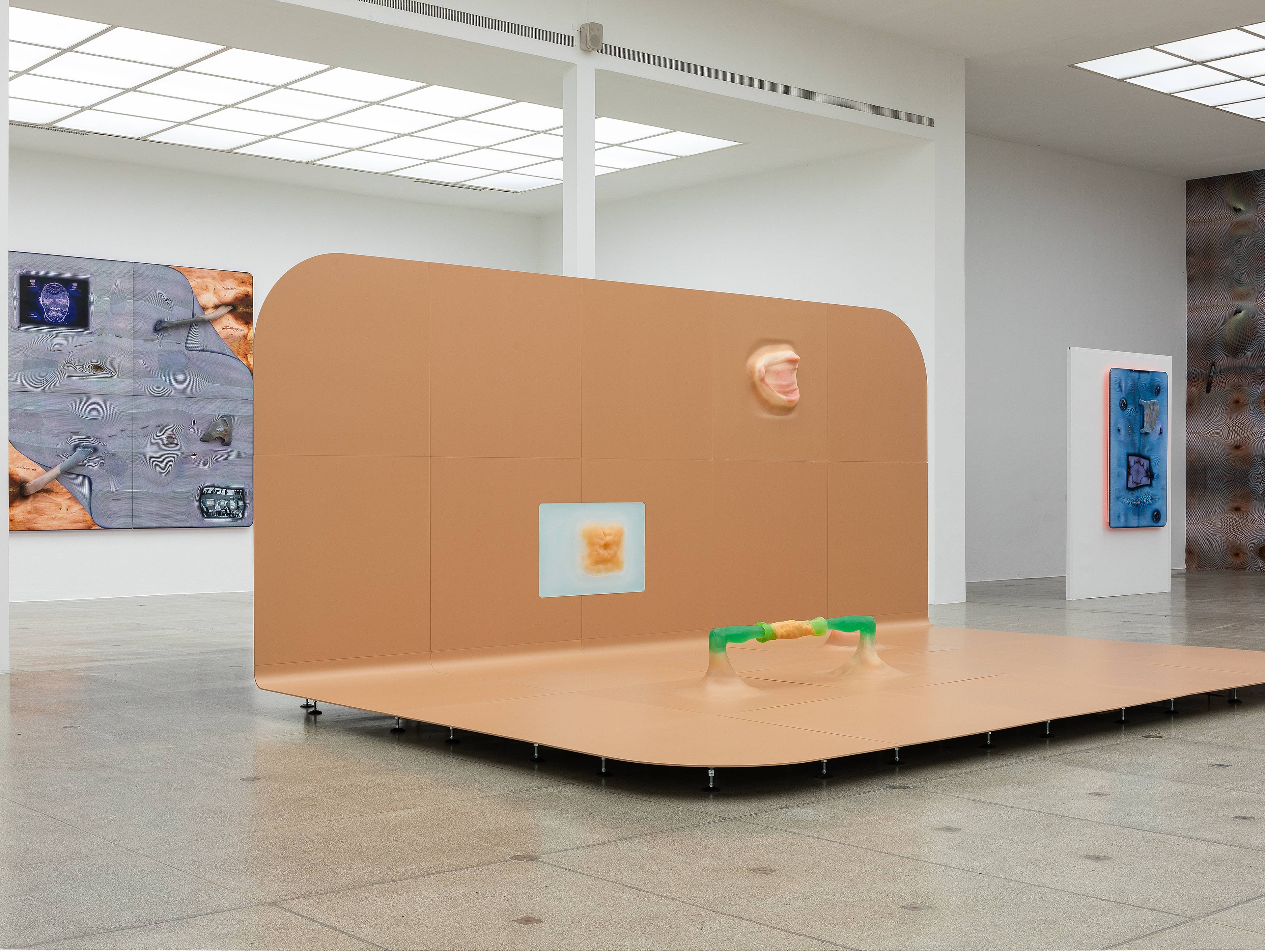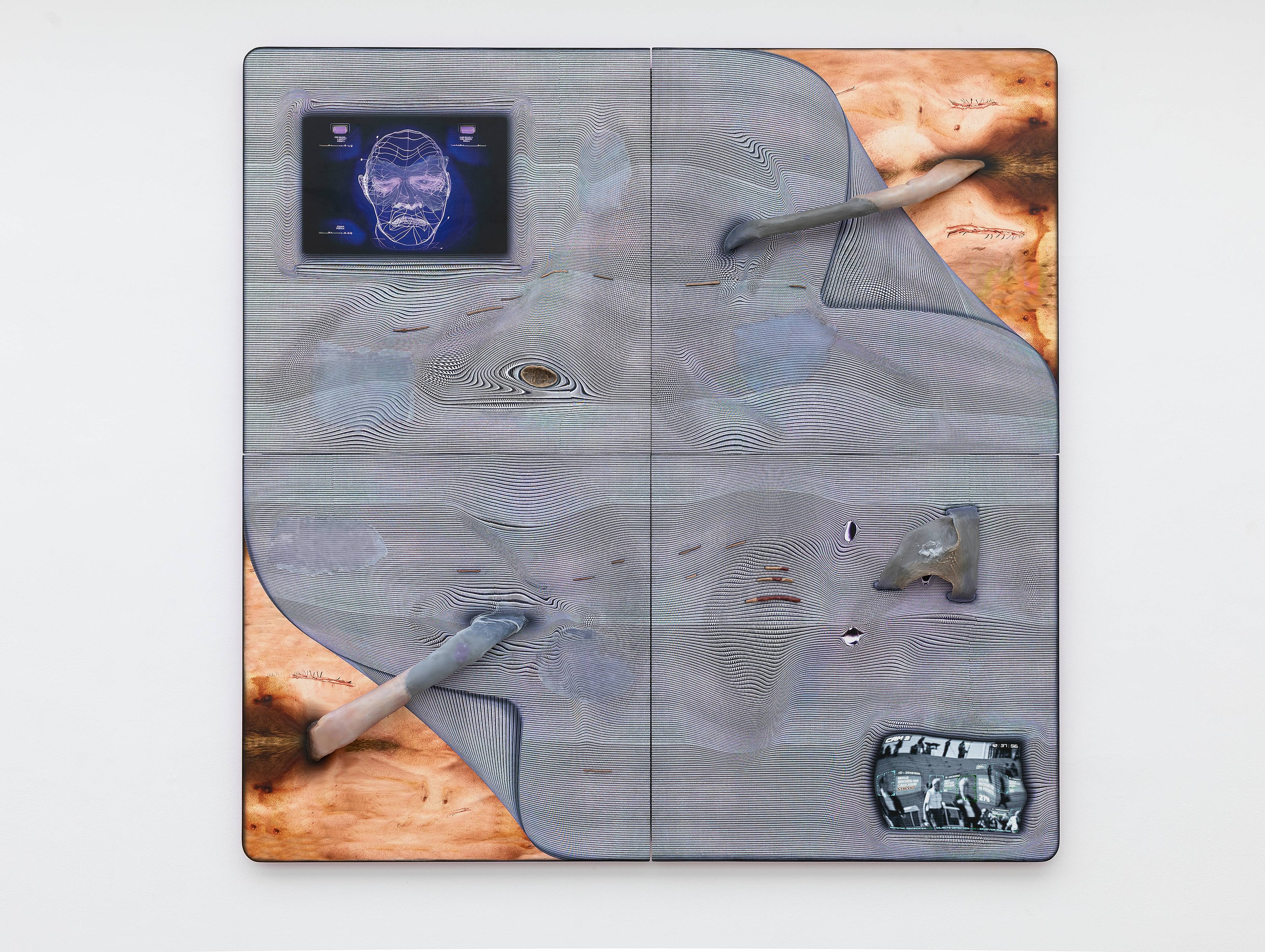Experiencing Tishan Hsu’s exhibition “recent work 2023” feels like a rollercoaster ride: You get the rush of dissolving reality, the near weightlessness at the top, but also the nasty contraction of the viscera and the slight nausea that sits in the throat on the way back down. This is surprising as, except for one LED panel with an animated video and sound (grass-screen-skin: zoom 2, all works 2023), there is no actual movement involved in this show. Hsu manages to shake you up with static renderings of creature-like grids and mechanical nudes that combine abject carnality with dizzying digital illusion.
Hsu’s recent rediscovery and his introduction as a late-understood visionary, first by a major survey at the Hammer Museum and the SculptureCenter in 2020, followed by his appearance at the 2022 Venice Biennale, continues at Secession, where a selection of new works is shown. Hsu’s oeuvre has always been marked by an astonishing stringency, while consistently being infused with the latest technological developments, from digital images and photoshop to 3D printing and AI (the latter used by Hsu for the first time in producing the exhibited works). His engagement with the entanglement of body and technology dates back to the early 1980s, when the artist moved from Boston, where he grew up and studied architecture at MIT, to New York, where he took up a job as word processor at a Wall Street law firm. These forward-looking environments informed his practice around cyborg-like hybridity, which, at that time, was largely a trope in sci-fi literature and film rather than in the visual arts.
In Vienna, one of the most striking pieces, skin-screen: emergence (quadriptych), consists of four rounded panels that, attached to the wall at a distance, leave a neon orange radiation behind them. Here, hyperreal evocations of skin are fused with a distorted grid. A shimmering, heart-shaped form with numerous, fragile wrinkles seems to push outwards, while skin clothed with goosebumps, simultaneously formless and razor-sharp, floats in a stream of blurred dots – receding materiality meeting stirring physicality. As though this were not visually and viscerally bewildering enough, there are also silicon forms growing out of the panels, whether as tiny messy blobs that seem to be squeezed out of the grid or as some kind of limb breaking out of and repenetrating its surface. In between, there are juicy nipples and screen-like recesses that show an X-ray of an animal and slightly fuzzy images of flesh and orifices.
Every surface in the exhibition, encompassing further wall works and two sculptures, is like a battlefield of different realities, textures, and modes – and even of the body itself, albeit never in its “natural” wholeness. Destabilizing essentialist categories like “gender,” “subject,” “nature,” or “technology,” the body is only shown from a clinical, factual perspective in total fragmentation and depersonalization, as a locus of surveillance and control by techno-rationality. At times, the artist chooses quite stale images to make his point – for example, a person behind a screen touches it as if being captured (double-breath-green-2), or a masked human overwritten with the slogan “Erase all data? [Y/N]” (screen-bodydata) – while still managing to maintain an uncanny atmosphere.
Simultaneously, the exhibition space is surreally filled with the innocent chirping of crickets and the singing of birds – a nature soundtrack reminiscent of sleep sounds meant to relieve insomnia. The moment is immersive, just like the striking work ears-screen-skin: Vienna, a printed wallpaper that covers the whole front wall in different motifs derived from the panel works. Even though the ornamental structure contains repetition and seriality, the forms in this body-tech landscape are inexactly mirrored, lending it an affective liveliness that tosses back and forth between discomfort and marveling.
Hsu’s works constantly play with building up illusion, only to break it down once more. If you look closely, you will see not only literal holes in the surfaces, but also glitches. The artist is not scared to be bold, nor to make mistakes, the works’ imperfection and contingency testifying to a hybrid sensibility. The dot grid in skin-screen: emergence (quadriptych) is interrupted with slight deviations; the various parts of the wallpaper don’t always perfectly match; and the sculpture tablet-skin-screen, a laptop-like surface with bodily silicon molds on the its front, reveals its profane building structure on its back. Hsu’s works disclose their made-ness, emphasizing that they share a continuum of existence with the spectator, instead of creating yet another fictitious world. It is their eccentric combination of the rational and scientific with the uncontrollable and irrational, their vulnerable situatedness in the here and now, that make you look in awe, and not without a shiver down your spine.
___
“recent work 2023”
Secession, Vienna
1 Dec 2023 – 11 Feb 2024


